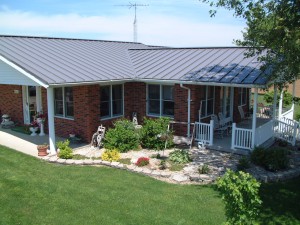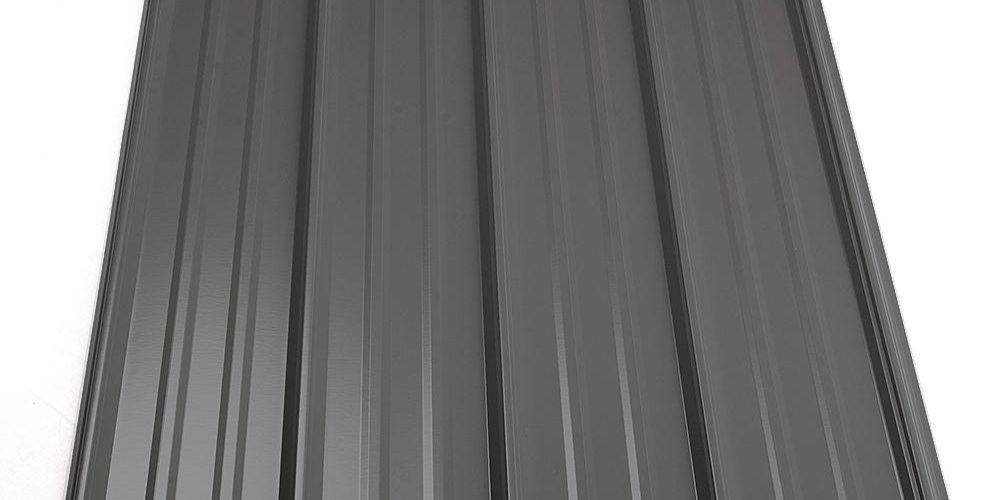Metal roofing materials have been around for ages but have only gained popularity among builders of quality residential and commercial construction in the past decade thanks to the great strides that have been made in the quality of manufacturing, the wider diversity of structures for which it is made and the creative marketing of these products. Residential home builders, professional contractors and commercial planners have been standing up and taking notice of this old but new roofing material made of metal. Long gone are the days when the thought of metal roof materials would conjure images of shanty towns with their creatively placed corrugated metal roofs. As with any building plan, there are a myriad of things to think about when considering a metal roofing system for your reroof or new construction project. Longevity, upkeep, aesthetics, value and how it withstands the elements are some of them.
Knowing how long the roof will last is the corner stone of all the elements that go into making the decision on this long term commitment. The life of metal roofs is about 50 years, twice as long as tile and commercial built up roofing systems which last about 20 to 25 years and more than three times as long as shingles which last about 10 to 15 years.
Metal roofs are quite durable and generally require little maintenance. With the exception of the exposed fastener style panels which will likely need some fasteners replaced periodically, depending on the elements they are exposed to, many metal roof maintenance routines are limited mainly to aesthetics. One would have to periodically pressure wash their metal roof as needed or as governed by the city or community in which the building or home is located. Many municipalities and communities across the U.S. have rules regarding aesthetics. In these areas one would likely receive a written notice letting the property owner know when it’s time to get the roof cleaned.

The detail most widely considered by the consumer when taking on the endeavor of installing a roof is, of course, cost. It doesn’t take long to figure out metal roofing material is among the priciest of all standard roofing materials. Like most building materials, the metal roofing materials cost varies by region and is dictated mainly by supply and demand, market value and the distance from the manufacturer to its destination. In metropolitan U.S. locations the cost of sheet metal roofing materials, including labor for installation, hovers around $7.50 to $10.00 per roofing square for the popular standing seam variety. For comparison sake let’s consider that tile roofs run about $5.50 to $7.00 per roofing square and shingle and commercial built up roofs run about $4.00 to $6.00 per roofing square (in the professional roofing world the term “roofing square” represents a 10’ x 10’ area. In other words, 100 square foot). Metal is clearly the most expensive but it is important to consider the pro’s and con’s as related to one’s specific construction needs when making a selection.
One major point of concern when reroofing or putting on a new roof is how the roof will withstand the elements. The most dangerous and damaging natural element to any roof is wind. Metal standing seam roofing panels are most effective against high winds only when the panel is properly fastened onto the roof by qualified roofing technicians. When the clips on the standing seam panels are spaced correctly and close together they create a greater negative pressure reading which means when a heavy wind storm such as a hurricane passes over it the panels are less likely to blow off the roof. Fire is another major concern when considering roofing materials.
Unlike some other petroleum based roofing materials, metal is not combustible and can withstand very high degrees of heat. Along the same line, since metal roofs are not petroleum based they are not affected by thermal shock which is the effect of extreme heat (summer sun) versus a sudden shock of cold (cold rain, hail) or vice versa. Thermal shock is an item of great concern in most regions of the U.S. and is the cause of most deterioration of roofs.
A last note of advice to those considering installing a metal roof is to get at least 3 estimates from qualified and insured roofing professionals.
Advances in technology have made it possible for this natural element to become the forerunner of a human necessity. A roof over ones head, an idea so simple leaves us with so many choices to make. Studying and considering metal building kits may be the answer to your needs.
Related Posts







